Mercedes Vito Bus vs Suzuki Vitara – Differences & prices compared
Compare performance, boot space, consumption and price in one view.
Find out now: which car is the better choice for you – Mercedes Vito Bus or Suzuki Vitara?
The Mercedes Vito Bus (Bus) comes with a Diesel, Electric or Petrol engine and Automatic transmission. In comparison, the Suzuki Vitara (SUV) features a Petrol MHEV or Full Hybrid engine with Manuel or Automatic transmission.
When it comes to boot capacity, the Mercedes Vito Bus offers 1390 L, while the Suzuki Vitara provides 375 L – depending on how much space you need. If you’re looking for more power, decide whether the 237 HP of the Mercedes Vito Bus or the 129 HP of the Suzuki Vitara suits your needs better.
In terms of consumption, the values are 26.70 kWh6.70 L per 100 km for the Mercedes Vito Bus, and 5 L for the Suzuki Vitara.
Price-wise, the Mercedes Vito Bus starts at 36300 £, while the Suzuki Vitara is available from 23200 £. Compare all the details and find out which model fits your lifestyle best!
Mercedes Vito Bus
The Mercedes-Benz Vito Bus offers a versatile solution for those in need of spacious and comfortable group transportation. Its refined interior is designed to enhance passenger comfort, making it ideal for both business and leisure travel. With a focus on safety and efficiency, it provides a reliable driving experience that aligns with the high standards expected of the Mercedes-Benz brand.
details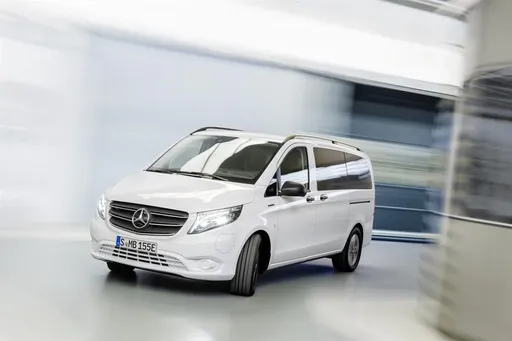
Suzuki Vitara
The Suzuki Vitara impresses with its compact design and robust stance, making it ideal for both urban and off-road adventures. Its sleek lines and modern aesthetics ensure it stands out on the road, complemented by a comfortable and high-tech interior. The Vitara offers a smooth and engaging driving experience, combining efficiency with practicality.
details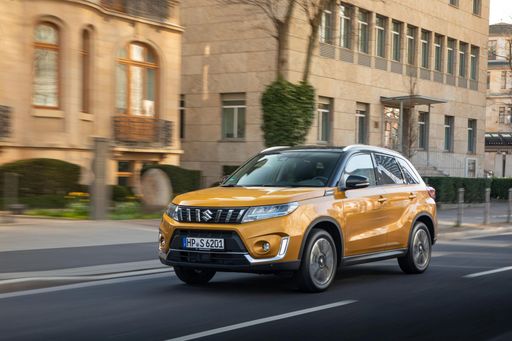 @ Suzuki
@ Suzuki
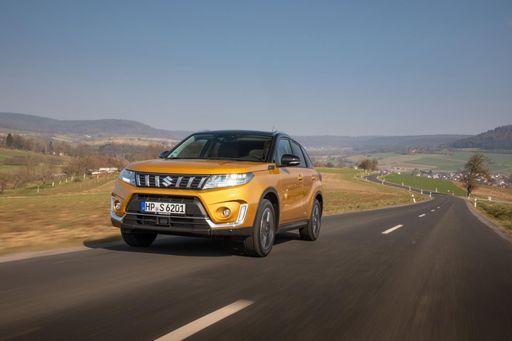 @ Suzuki
@ Suzuki
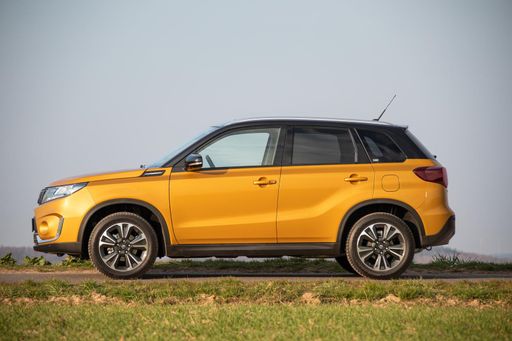 @ Suzuki
@ Suzuki
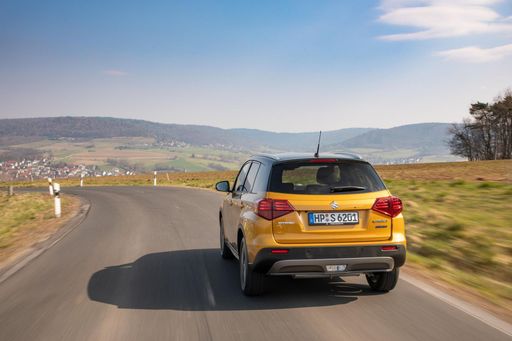 @ Suzuki
@ Suzuki
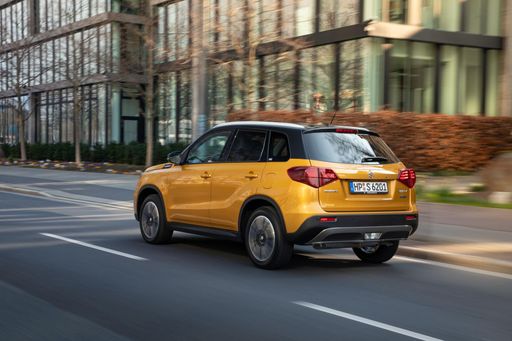 @ Suzuki
@ Suzuki
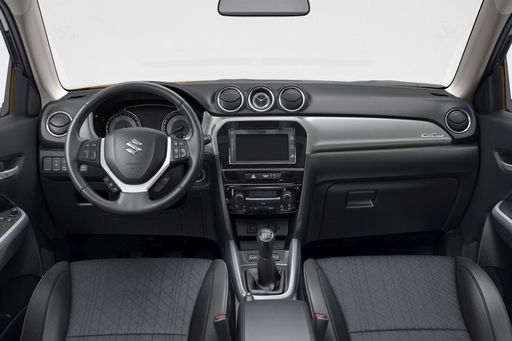 @ Suzuki
@ Suzuki

|

|
|
|
|
Costs and Consumption |
|
|---|---|
|
Price
36300 - 55000 £
|
Price
23200 - 30400 £
|
|
Consumption L/100km
6.7 - 10 L
|
Consumption L/100km
5 - 5.6 L
|
|
Consumption kWh/100km
26.7 - 26.9 kWh
|
Consumption kWh/100km
-
|
|
Electric Range
248 - 370 km
|
Electric Range
-
|
|
Battery Capacity
60 - 90 kWh
|
Battery Capacity
-
|
|
co2
0 - 228 g/km
|
co2
113 - 129 g/km
|
|
Fuel tank capacity
57 - 70 L
|
Fuel tank capacity
47 L
|
Dimensions and Body |
|
|---|---|
|
Body Type
Bus
|
Body Type
SUV
|
|
Seats
8
|
Seats
5
|
|
Doors
4
|
Doors
5
|
|
Curb weight
2023 - 2739 kg
|
Curb weight
1255 - 1395 kg
|
|
Trunk capacity
580 - 1390 L
|
Trunk capacity
289 - 375 L
|
|
Length
4895 - 5370 mm
|
Length
4185 mm
|
|
Width
1928 mm
|
Width
1775 mm
|
|
Height
1890 mm
|
Height
1595 mm
|
|
Payload
726 - 1077 kg
|
Payload
375 - 395 kg
|
Engine and Performance |
|
|---|---|
|
Engine Type
Diesel, Electric, Petrol
|
Engine Type
Petrol MHEV, Full Hybrid
|
|
Transmission
Automatic
|
Transmission
Manuel, Automatic
|
|
Transmission Detail
Automatic Gearbox
|
Transmission Detail
Manual Gearbox, Automated Manual
|
|
Drive Type
Rear-Wheel Drive, All-Wheel Drive, Front-Wheel Drive
|
Drive Type
Front-Wheel Drive, All-Wheel Drive
|
|
Power HP
136 - 237 HP
|
Power HP
116 - 129 HP
|
|
Acceleration 0-100km/h
-
|
Acceleration 0-100km/h
9.5 - 12.7 s
|
|
Max Speed
140 km/h
|
Max Speed
180 - 190 km/h
|
|
Torque
330 - 500 Nm
|
Torque
235 Nm
|
|
Number of Cylinders
4
|
Number of Cylinders
4
|
|
Power kW
100 - 174 kW
|
Power kW
85 - 95 kW
|
|
Engine capacity
1950 - 1999 cm3
|
Engine capacity
1373 - 1462 cm3
|
General |
|
|---|---|
|
Model Year
2024
|
Model Year
2024
|
|
CO2 Efficiency Class
G, A
|
CO2 Efficiency Class
D, C
|
|
Brand
Mercedes-Benz
|
Brand
Suzuki
|
Mercedes Vito Bus
The Mercedes Vito Bus: A Comprehensive Look at Innovation and Performance
In the automotive world, the Mercedes Vito Bus stands out as a versatile and reliable choice for those in need of a spacious and efficient mode of transport. With a reputation for engineering excellence, Mercedes-Benz has once again delivered with the latest versions of the Vito Bus. This article delves into the technical aspects, innovations, and what makes the Vito Bus a prime option in its segment.
Engine Power and Efficiency
The Mercedes Vito Bus offers a remarkable range of engine configurations, catering to both diesel and electric powertrains. The diesel models come with options ranging from 136 HP to a powerful 237 HP. The robust four-cylinder diesel engines are designed for efficiency, offering a range of fuel consumption figures from 6.7 L to 7.8 L per 100 kilometers, depending on the variant. Meanwhile, the electric eVito Tourer provides an impressive alternative with a power output of 204 HP and offers ranges of up to 371 kilometers on a single charge, making it a frontrunner in sustainable transportation solutions.
Transmission and Drivetrain Options
The Vito Bus is equipped with both manual and automatic transmission options, ensuring a drive tailored to user preferences. The 9G-TRONIC automatic gearbox is notable for its smooth transitions, enhancing the driving experience. Customers can choose between rear-wheel drive and the adaptable all-wheel drive system. The introduction of the eVito Tourer's front-wheel drive system further expands the versatility of the lineup, offering an electric alternative for urban and rural environments alike.
Interior Comfort and Practicality
The interior of the Vito Bus is designed with comfort and convenience in mind. Capable of seating up to eight passengers, the spacious cabin is ideal for family travel or business transportation. The Vito Bus offers three body lengths—kompakt, lang, and extralang—providing flexibility to accommodate different passenger and cargo requirements. The well-thought-out design ensures ample storage with trunk capacities ranging up to 1,390 liters in certain configurations.
Advanced Innovations
Mercedes-Benz has equipped the Vito Bus with a host of advanced technological features. The focus on safety is evident, with systems like Crosswind Assist and Attention Assist, ensuring greater control and alertness on the road. The eVito Tourer comes with the latest in electric vehicle technology, including efficient battery management systems that optimize range and performance.
Performance and Dynamics
The Vito Bus showcases impressive performance metrics across its variants. With a maximum torque ranging from 330 Nm to 500 Nm, the Vito Bus ensures a responsive and agile driving experience. The consistent build quality and dynamic chassis contribute to a pleasing ride, whether navigating city streets or cruising on the highway.
Conclusion
The Mercedes Vito Bus continues to be a leading choice for those looking for a reliable and performance-oriented vehicle. With its diverse range of engine options, innovative features, and versatile configurations, the Vito Bus meets the demands of both personal and professional transportation. The introduction of electric variants highlights Mercedes-Benz's commitment to sustainability without compromising on power or range. As the automotive industry continues to evolve, the Vito Bus exemplifies the blend of traditional excellence and forward-thinking innovation.
Suzuki Vitara
Introduction to the Suzuki Vitara: A Blend of Style and Efficiency
The Suzuki Vitara has long been a favourite among fans of compact SUVs, offering a unique combination of style, performance, and technological innovation. The 2024 range continues to build on this strong foundation, presenting drivers with an attractive package that meets modern driving demands with impressive efficiency and capability.
Powertrain Innovations: Efficient Hybrid Options
At the heart of the Suzuki Vitara lineup lies a well-engineered selection of hybrid powertrains designed to cater to a variety of driver preferences. The vehicles are available with both mild-hybrid and full-hybrid systems, which provide a perfect balance between performance and fuel efficiency. The mild-hybrid models feature a 1.4-litre Boosterjet engine, while the full-hybrid variants are powered by a 1.5-litre Dualjet engine. The combination of these engines with hybrid technology results in an impressive fuel consumption range of 5 to 5.6 L/100km.
Performance and Driving Experience
The driving experience offered by the 2024 Suzuki Vitara is enhanced by its powertrain options, delivering between 116 and 129 PS. Depending on the model, the Vitara can achieve a top speed between 180 and 190 km/h and a 0-100 km/h acceleration time ranging from 9.5 to 12.7 seconds. The option of front-wheel or all-wheel drive (ALLGRIP) ensures versatility and adaptability across different terrains, providing superior handling and control, especially in challenging weather conditions.
Advanced Features and Comfort
The Suzuki Vitara doesn't compromise on comfort and advanced features. Depending on the chosen trim level, which includes Club, Comfort, Comfort ALLGRIP, Comfort+, and Comfort+ ALLGRIP, the Vitara is equipped with an array of modern amenities. These trim lines ensure that every driver can find a Vitara that matches their specific needs and preferences. From advanced infotainment systems to climate control options, the Vitara ensures a connected and comfortable driving experience.
Practicality Meets Style
With a body style classified as an SUV, the Suzuki Vitara combines practical space with an aesthetically pleasing design. Measuring 4185 mm in length, 1775 mm in width, and 1595 mm in height, the Vitara offers a substantial interior space with seating for five passengers and a boot capacity ranging from 289 to 375 litres. The thoughtfully designed interior and exterior ensure that practicality does not detract from its stylish appearance.
Efficiency and Cost-Effectiveness
The Suzuki Vitara's efficiency is further highlighted by its competitive CO2 emissions, ranging from 113 to 129 g/km, aligning with CO2 efficiency classes C and D. The cost of ownership is made manageable with monthly costs estimated between €858 and €971, while maintaining economical running with costs per kilometre ranging from 34.3 to 38.9 cents.
Conclusion: A Wise Choice for Today’s Drivers
Overall, the 2024 Suzuki Vitara is a compelling option for those seeking a compact SUV that delivers on performance, efficiency, and modern technology. With its blend of hybrid innovations, practicality, and a range of trim options, the Vitara is well-equipped to meet the diverse needs of contemporary motorists, offering a driving experience that is both enjoyable and sustainable.
Which drive types are available for the Mercedes Vito Bus?
Available as Rear-Wheel Drive, All-Wheel Drive or Front-Wheel Drive.
The prices and data displayed are estimates based on German list prices and may vary by country. This information is not legally binding.
